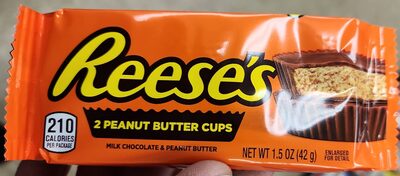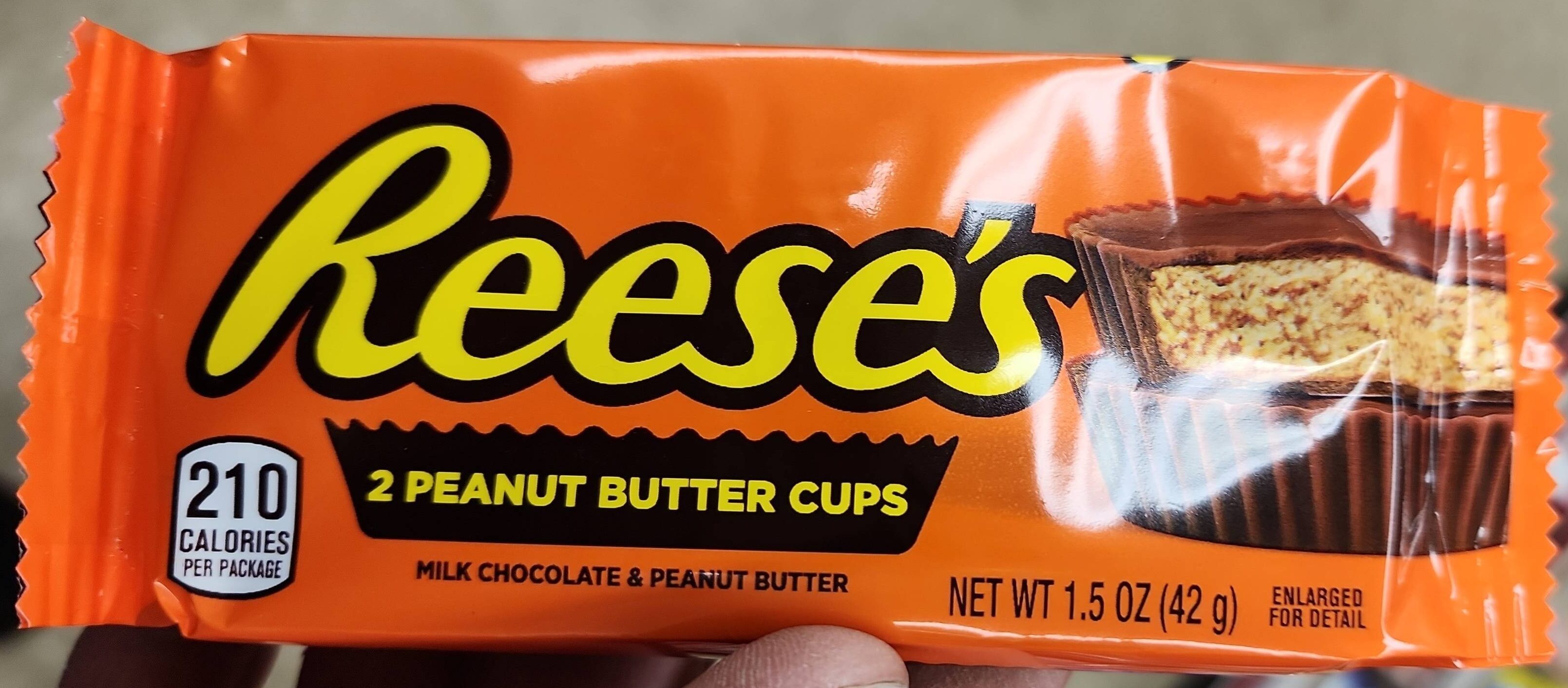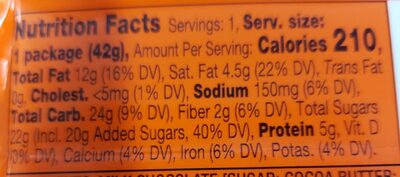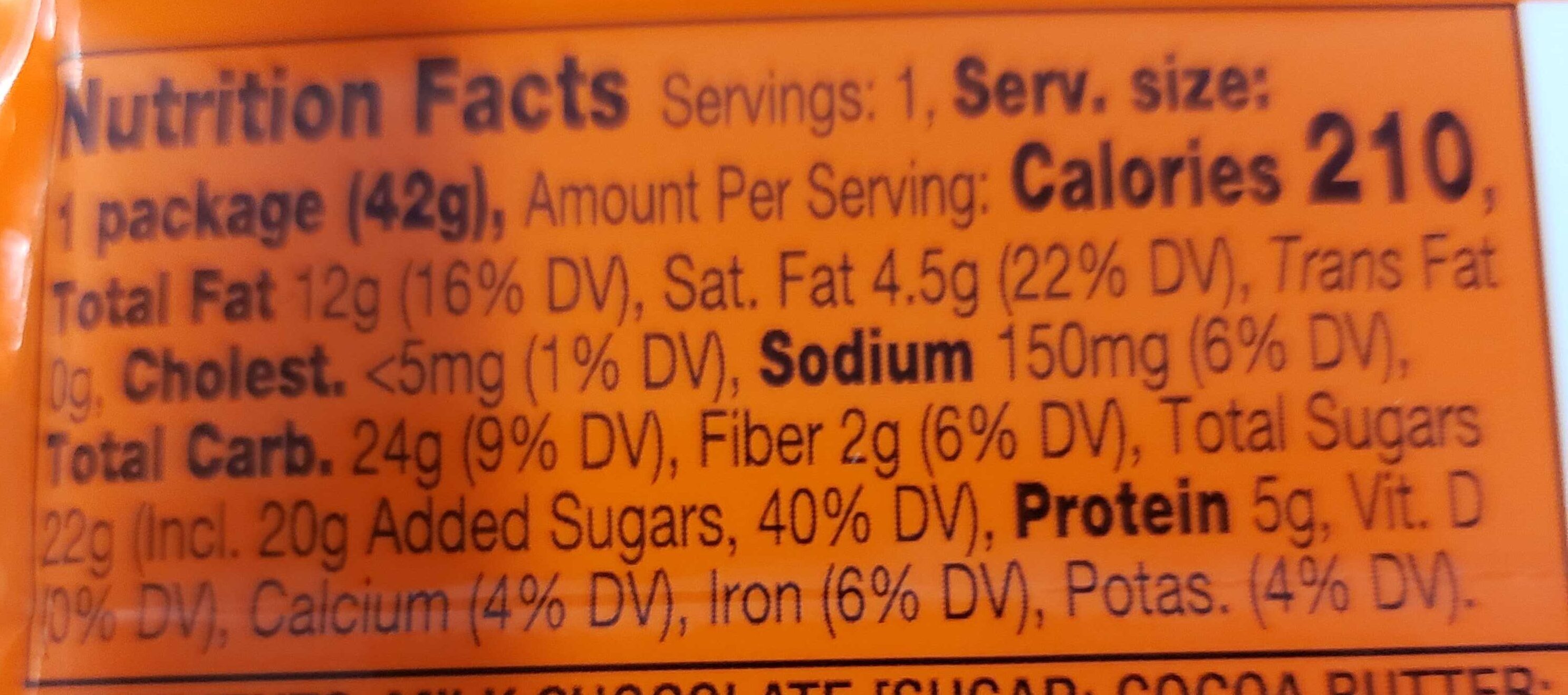Reese's Peanut Butter Cup - 2 pieces, 1.5 oz (42 g)
Ambiguous barcode: This product has a Restricted Circulation Number barcode for products within a company. This means that different producers and stores can use the same barcode for different products.
×
This product page is not complete. You can help to complete it by editing it and adding more data from the photos we have, or by taking more photos using the app for Android or iPhone/iPad. Thank you!
×
Barcode: 03444009
Common name: Milk Chocolate Peanut Butter Cups
Quantity: 2 pieces, 1.5 oz (42 g)
Brands: Reese's
Brand owner: REESE'S
Categories: Snacks, Sweet snacks, Cocoa and its products, Confectioneries, Bars, Chocolate candies, Bonbons, Bars-covered-with-chocolate, Peanut butter cups
Labels, certifications, awards:
No gluten, Kosher, Contains GMOs, Orthodox Union Kosher
Manufacturing or processing places: USA
Link to the product page on the official site of the producer: https://www.hersheys.com/reeses/en_us/pr...
Countries where sold: France, Germany, United States
Matching with your preferences
Environment
Packaging
Transportation
Report a problem
Data sources
Product added on by beniben
Last edit of product page on by macrofactor.
Product page also edited by acistopogm, bdwyer, benjamin, ecoscore-impact-estimator, foodless, foodvisor, fude, gavingt, inf, itsjustruby, moon-rabbit, openfoodfacts-contributors, org-database-usda, packbot, prepperapp, sierrakomodo, smoothie-app, tacite, tacite-mass-editor, teolemon, tmbe7, waistline-app, zi, zixianglim.










